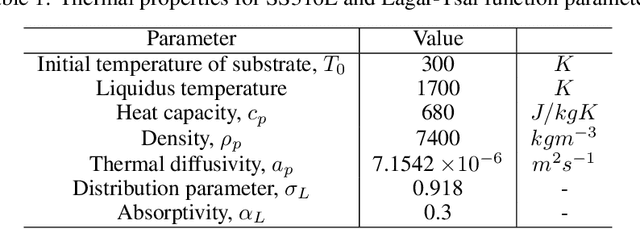Susheel Dharmadhikari
A Fully-Automated Framework Integrating Gaussian Process Regression and Bayesian Optimization to Design Pin-Fins
Jan 30, 2023Abstract:Pin fins are imperative in the cooling of turbine blades. The designs of pin fins, therefore, have seen significant research in the past. With the developments in metal additive manufacturing, novel design approaches toward complex geometries are now feasible. To that end, this article presents a Bayesian optimization approach for designing inline pins that can achieve low pressure loss. The pin-fin shape is defined using featurized (parametrized) piecewise cubic splines in 2D. The complexity of the shape is dependent on the number of splines used for the analysis. From a method development perspective, the study is performed using three splines. Owing to this piece-wise modeling, a unique pin fin design is defined using five features. After specifying the design, a computational fluid dynamics-based model is developed that computes the pressure drop during the flow. Bayesian optimization is carried out on a Gaussian processes-based surrogate to obtain an optimal combination of pin-fin features to minimize the pressure drop. The results show that the optimization tends to approach an aerodynamic design leading to low pressure drop corroborating with the existing knowledge. Furthermore, multiple iterations of optimizations are conducted with varying degree of input data. The results reveal that a convergence to similar optimal design is achieved with a minimum of just twenty five initial design-of-experiments data points for the surrogate. Sensitivity analysis shows that the distance between the rows of the pin fins is the most dominant feature influencing the pressure drop. In summary, the newly developed automated framework demonstrates remarkable capabilities in designing pin fins with superior performance characteristics.
A Reinforcement Learning Approach for Process Parameter Optimization in Additive Manufacturing
Nov 17, 2022



Abstract:Process optimization for metal additive manufacturing (AM) is crucial to ensure repeatability, control microstructure, and minimize defects. Despite efforts to address this via the traditional design of experiments and statistical process mapping, there is limited insight on an on-the-fly optimization framework that can be integrated into a metal AM system. Additionally, most of these methods, being data-intensive, cannot be supported by a metal AM alloy or system due to budget restrictions. To tackle this issue, the article introduces a Reinforcement Learning (RL) methodology transformed into an optimization problem in the realm of metal AM. An off-policy RL framework based on Q-learning is proposed to find optimal laser power ($P$) - scan velocity ($v$) combinations with the objective of maintaining steady-state melt pool depth. For this, an experimentally validated Eagar-Tsai formulation is used to emulate the Laser-Directed Energy Deposition environment, where the laser operates as the agent across the $P-v$ space such that it maximizes rewards for a melt pool depth closer to the optimum. The culmination of the training process yields a Q-table where the state ($P,v$) with the highest Q-value corresponds to the optimized process parameter. The resultant melt pool depths and the mapping of Q-values to the $P-v$ space show congruence with experimental observations. The framework, therefore, provides a model-free approach to learning without any prior.
 Add to Chrome
Add to Chrome Add to Firefox
Add to Firefox Add to Edge
Add to Edge